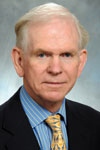Adaptation or Mitigation? These are two terrible terms used to communicate possible responses to climate disruption (and its causes).
Adaptation refers to preparing for and dealing with the impacts of climate disruption. Adaptation efforts can range from building sea walls higher around coastal cities (to stem the damage from storm surges and rising sea levels) to developing diverse, resilient, local food systems (to reduce dependence on far-off monoculture agriculture operations that are vulnerable to single threats like drought or pests).

But adaptation is a problematic term. To many, it represents giving up on efforts to stem the human drivers of climate change (primarily carbon dioxide emissions). It's the
term of choice for Big Oil — because they can spin it so it sounds easy to adapt: 'we're an adaptable species, after all, this is nothing new.'
Nothing could be further from the truth. The impacts of climate disruption that we're already feeling and that will intensify without dramatic action will be unlike anything humans have adapted to during the past 10,000 years of civilization
— as Dianne Dumanoski calls it, the
"long summer" in the climate record that has made human civilization possible.
Bob Perkowitz, founder of
ecoAmerica, outlines this issue well
here, and calls for the use of the term "preparedness" instead of "adaptation."
Mitigation is another clunky term. It means stopping the activities that drive climate change
— namely greenhouse gas emissions and land-use changes, like deforestation.
As action on mitigation has been woefully inadequate over the past three decades or so that we've been at it, many are now focusing more adaptation, after years of hopeful resistance. As the impacts become more plain, we're forced to do so. Furthermore, we must reconcile the fact that there's plenty more climate disruption locked in
— even if we stopped all emissions today, time delays in the system ensure that we'll be feeling the impacts from past emissions for decades to come.

So, this new dynamic leads to some practical strategic planning dilemmas on the ground. How do we organize and differentiate our mitigation and adaptation efforts? Our work with colleges through the
ACUPCC started with a strong focus on mitigation
— part of the commitment is eliminating net greenhouse gas emissions. Last year, we published a
white paper looking at higher education's role in preparing society for the impacts of climate disruption. This process led us to questions like: 'where does adaptation fit into the ACUPCC?' and 'do we need a parallel initiative focused on adaptation?'
This article by Mark Trexler
— Why it's okay to mix up climate mitigation, adaptation — published in
GreenBiz yesterday offers a welcome solution on how to think about it.
As we emphasized in our
higher ed preparedness report (and as most adaptation advocates stress), there are plenty of ways to prepare for climate impacts that also contribute to reducing greenhouse gas emissions. For example, better building design and insulation can protect against the dangers of heat waves, while also keeping people cool with less energy-sucking AC.
Keep an eye out for the continued increase in focus on preparedness, and hopefully a focus on smart efforts that make our communities safer, while also reducing our contributions to climate disruption.
For a great in-depth discussion on some of these issues, check out this segment
— "An Inconvenient Silence" — from HuffPo Live (it's worth suffering through the Google Hangout echo issue). And this recent
interview with John Kerry from Grist.
Stay going.
 Although I'm not sure that's good news for the divestment movement. The more I look at this, the more convinced I become that the best thing for the goals of the campaign would be if most endowments continue to refuse to divest.
Although I'm not sure that's good news for the divestment movement. The more I look at this, the more convinced I become that the best thing for the goals of the campaign would be if most endowments continue to refuse to divest. 






